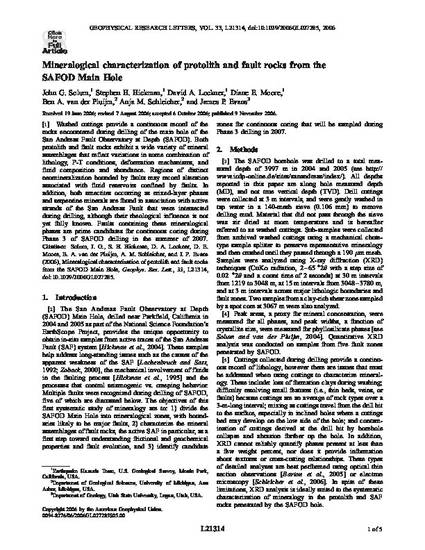
Washed cuttings provide a continuous record of the rocks encountered during drilling of the main hole of the San Andreas Fault Observatory at Depth (SAFOD). Both protolith and fault rocks exhibit a wide variety of mineral assemblages that reflect variations in some combination of lithology, P-T conditions, deformation mechanisms, and fluid composition and abundance. Regions of distinct neomineralization bounded by faults may record alteration associated with fluid reservoirs confined by faults. In addition, both smectites occurring as mixed-layer phases and serpentine minerals are found in association with active strands of the San Andreas Fault that were intersected during drilling, although their rheological influence is not yet fully known. Faults containing these mineralogical phases are prime candidates for continuous coring during Phase 3 of SAFOD drilling in the summer of 2007.

Originally published by American Geophysical Union. Publisher's PDF available through Geophysical Research Letters.